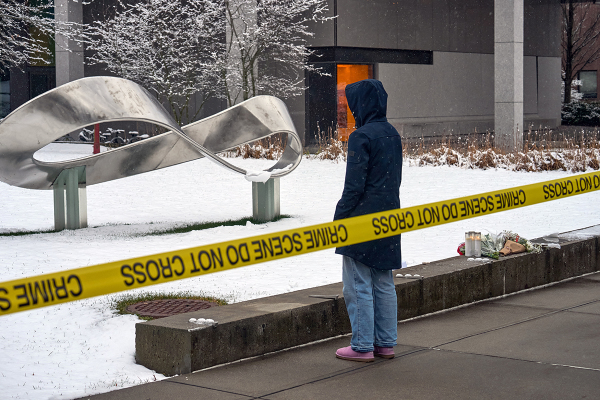Reading Holy Scripture with a telescope and microscope

Last week, as is my usual custom, I sat down on Saturday morning to read the Saturday-Sunday edition of TheWall Street Journal. As always, I looked forward with particular relish to reading Peggy Noonan’s weekly column. I am very seldom disappointed when reading Ms. Noonan’s column, and this one was no exception.
In this particular column, "My Summer with Leo Tolstoy," Ms. Noonan recounts her joy in having spent the summer reading Leo Tolstoy’s masterpiece, War and Peace, all 1000+ pages. Her verdict was unequivocal:
“It was stupendous. At some point I understood I hadn’t made a commitment of time but entered a world. It is about life….”
She cites William F. Buckley, Jr. having concluded after having read Herman Melville’s Moby Dick (the American equivalent of War and Peace), “To think I might have died without having read it.”
Having had the good fortune to have read both War and Peace and Moby Dick, I heartily concur with Noonan’s and Buckley’s assessments of these masterpieces of world literature. In the world of great novels that everyone should read, I would add the incomparable Jane Austen’s Pride and Prejudice. I would be sad indeed if I had died without reading Ms. Austen’s masterpiece.
However, Ms. Noonan’s column caused me to reflect on applying “To think I might have died without having read it” to Holy Scripture, and particularly to certain critically important books within the biblical canon. Of course, all of the Holy Scripture is equally valuable and divinely inspired. All of Scripture is equally divinely inspired, but God chose to reveal His truth to us progressively. In other words, He revealed Himself and His will to us in stages, each revelation building upon earlier revelations, beginning with Genesis and culminating in the person of His Son, Jesus the Christ, and the subsequent explanation of the Incarnation, Atonement, Resurrection, and Ascension in the New Testament.
As I thought about Ms. Noonan’s great appreciation of Tolstoy (and Buckley’s of Melville), I thought about my own experience of interacting with Holy Scripture. As I was growing up in a Christian home with numerous-times-weekly attendance in a Southern Baptist church, I faithfully did my “daily Bible readings,” studied my weekly Sunday School lesson and attempted to memorize the memory Bible verses encouraged by the Sunday School literature.
This devotional “micro” approach to Scripture was very helpful to me personally and many of my Sunday School classmates. However, I did not develop a “macro” approach to reading whole books of the Bible as I read other books such as secular biographies and novels until after I became an undergraduate in college.
I had examined small passages of Scripture with a spiritual microscope, but I had not taken out a spiritual telescope to examine and survey the broad horizon of biblical truth in all its magnificence. This macro approach was tremendously rewarding and gave me a much deeper understanding of God’s revelation of Himself and His eternal purposes.
Please do not misunderstand me. All study of Holy Scripture will bring great spiritual reward. However, it has been my observation and experience that in the branches of Christendom in which I have interacted, the microscope has been far more often employed than the telescope. This has led to less understanding of the “Big Picture” than would be the case otherwise.
I have found that consciously approaching various books of Scripture and reading them in large “chunks,” as you would other books, brings a deeper understanding of our Heavenly Father’s revelation of Himself and His purposes.
I would like to share with you my own experience of this approach from one Christian to another. This approach has helped me tremendously over the years and I hope and pray it may be edifying for you as well.
I would encourage you to get a good modern translation or paraphrase of Holy Scripture. Then, select some strategic books to read in large chunks, the “telescope” approach.
Four books I have read, and do read in this way, are the Gospel of John, the Gospel of Luke, the Epistle to the Romans, and the Epistle to the Hebrews.
First, the Gospel of John with its overarching theme of Jesus as the Son of God. Beginning with the incomparable Prologue (John 1:1-18), John’s Gospel, written a generation after the Synoptics, is written first and foremost to a church that is now overwhelmingly Gentile (Greek), and thus is written to men and women who live in the same Greco-Roman thought world that we as the products of Western Civilization do. This is the reason many evangelistic associations and churches give new converts copies of the Gospel of John as they begin their journey as “Jesus followers.”
Second, the Gospel of Luke, whose overarching theme is Jesus as “the Son of Man.” The genealogy of Jesus is traced through his mother, Mary, and it is Dr. Luke, the physician, who interviews Mary concerning the Virgin Birth of our Savior. Even today, when I read the Gospel of Luke devotionally, I am deeply moved by the humanity of the Son of Man.
Third, the Epistle to the Romans by the Apostle Paul is the most comprehensive presentation of the major doctrines of the Christian faith in any one book of the New Testament. It is often said that it was Luther’s study of Romans that led him to salvation “by faith alone in Christ alone.” Personally, it is my favorite Bible book.
Fourth, the Epistle to the Hebrews is, in a very real sense, the Holy Spirit’s commentary on the Old Testament. During my ministry, I have preached through the Epistle to the Hebrews verse by verse three times. This microscopic as well as telescopic approach has been immensely rewarding personally and based upon the testimony of congregants, edifying to church members as well.
As I read Ms. Noonan’s column, the thought kept running through my mind, “To think I might have died without having read it.” For me, these four books — the Gospel of John, the Gospel of Luke, the Epistle to the Romans, and the Epistle to the Hebrews — kept coming to my mind and my heart.
I was once asked, “If you had to go to a desert island and you could only take four books of the Bible, which four would you take, and in what order?” My answer was, and is, “John, Luke, Romans, and Hebrews.”
As a fellow follower of Jesus, I encourage you to take out your telescope, as well as your microscope, and read Holy Scripture. Our Heavenly Father will bless and reward your efforts.
Dr. Richard Land, BA (Princeton, magna cum laude); D.Phil. (Oxford); Th.M (New Orleans Seminary). Dr. Land served as President of Southern Evangelical Seminary from July 2013 until July 2021. Upon his retirement, he was honored as President Emeritus and he continues to serve as an Adjunct Professor of Theology & Ethics. Dr. Land previously served as President of the Southern Baptist Convention's Ethics & Religious Liberty Commission (1988-2013) where he was also honored as President Emeritus upon his retirement. Dr. Land has also served as an Executive Editor and columnist for The Christian Post since 2011.
Dr. Land explores many timely and critical topics in his daily radio feature, “Bringing Every Thought Captive,” and in his weekly column for CP.





















